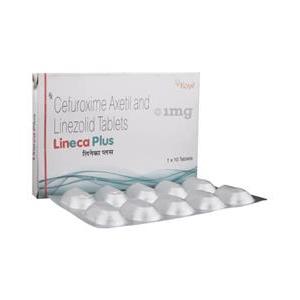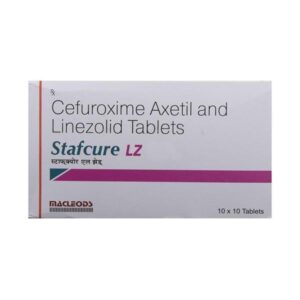CEFUROXIME + LINEZOLID
Cefuroxime: Cefuroxime is a second-generation cephalosporin antibiotic, used primarily for the treatment of bacterial infections. It is effective against a wide range of Gram-positive and Gram-negative bacteria.
The mechanism of action of cefuroxime involves interfering with the synthesis of bacterial cell walls. It specifically targets the penicillin-binding proteins (PBPs) that are responsible for cross-linking the peptidoglycan chains in the bacterial cell wall. By inhibiting this process, cefuroxime weakens the cell wall, leading to cell lysis and bacterial death.
The dose of cefuroxime can vary depending on the severity of the infection and the individual’s age and health condition. It is available in different forms, including tablets, oral suspension, and injectable solution. The usual adult oral dose ranges from 250mg to 500mg every 12 hours, while the injectable form is typically given as 750mg to 1.5g every 8 hours. Children may be prescribed lower doses based on their weight.
Common side effects of cefuroxime may include diarrhea, nausea, vomiting, stomach pain, headache, and allergic reactions such as rash or itching. It is important to note that if any severe side effects occur, such as severe diarrhea or an allergic reaction causing difficulty in breathing or swelling of the face, immediate medical attention should be sought.
Cefuroxime should be used with caution in individuals with a history of penicillin or cephalosporin allergies, as there may be a cross-reactivity. It is always recommended to consult a healthcare professional for proper diagnosis, dosage, and guidance when using any medication.
Linezolid: Linezolid is an antibiotic drug that is used to treat different types of bacterial infections. It belongs to a class of drugs called oxazolidinones. Linezolid is typically prescribed for infections caused by certain resistant bacteria, such as methicillin-resistant Staphylococcus aureus (MRSA) or vancomycin-resistant Enterococcus faecium (VRE).
The mechanism of action of Linezolid involves inhibiting the production of proteins necessary for bacterial growth. It does this by binding to a specific site on the bacterial ribosome, which prevents the initiation of protein synthesis.
Linezolid is available in oral and intravenous (IV) formulations. The recommended dose and duration of treatment depend on the specific infection being treated and the patient’s age and overall health. For most infections, the usual adult dose is 600 mg administered orally or via IV every 12 hours. The duration of treatment may range from a few days to several weeks, depending on the severity of the infection.
Like any medication, Linezolid can cause side effects. Common side effects include diarrhea, headache, nausea, vomiting, and dizziness. It may also cause a decrease in blood cell counts, so regular blood tests are necessary during treatment. In rare cases, Linezolid may lead to a serious condition known as serotonin syndrome, especially if used in combination with certain medications such as selective serotonin reuptake inhibitors (SSRIs) or serotonin-norepinephrine reuptake inhibitors (SNRIs). Symptoms of serotonin syndrome include confusion, hallucinations, rapid heartbeat, fever, muscle stiffness, and severe nausea or diarrhea.
It is important to note that Linezolid has some drug interactions, so it is crucial to inform the healthcare provider about all medications, supplements, or herbal products being taken before starting treatment.


